 BCATP
BCATP  |
Lancaster
|
Media
|
Lancaster
|
Media
 BCATP
BCATP  |
Lancaster
|
Media
|
Lancaster
|
Media
Museum Collections
Aircraft in the Collection
Aircraft of the BCATP
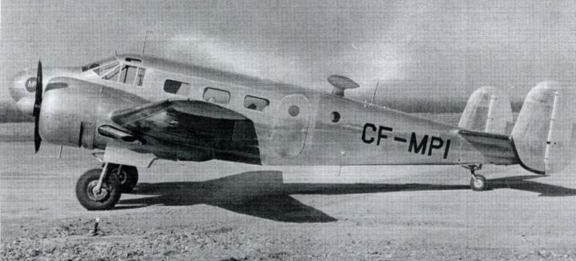
|
The Beech-18 is one of the most adaptable and versatile twin-engined aircraft ever built. The type first flew in 1937 and orders for military versions were placed in 1941 with a total of 5024 being delivered during the war. |
|
The military version was known as the C-45. 236 Expeditors were supplied to the RAF and RCAF and an additional 67 served with the Royal Navy's Fleet Air Arm. The allied air forces used them in a wide variety of roles including navigational training, bombing and gunnery training, utility transport, search and rescue and aerial photography. As a passenger transport, they were typically configured to carry six people.
The aircraft continued to serve after the war and its use in the Royal Canadian Air Force was expanded considerably as it replaced the Avro Anson in a number of roles. It became the primary multi-engined training aircraft and was also used as a navigational trainer, VIP transport, and search and rescue aircraft. Used by a number of different squadrons, the Expeditor continued to serve with the RCAF until 1968 and many served in the bush for years thereafter with civilian operators.
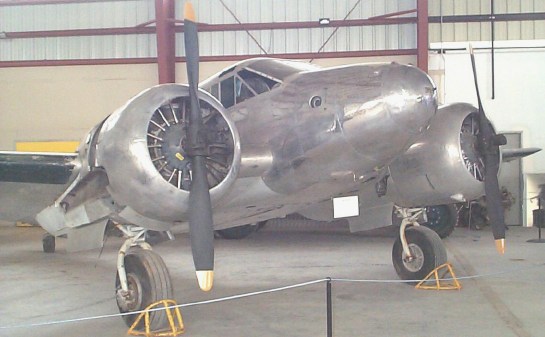
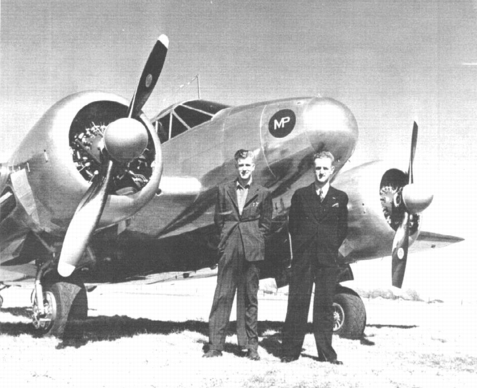 S.Cst. Stewart and Cst. Rothwell were in Wichita, Kansas to take possession of the aircraft on behalf of the RCMP in 1946. |
Our Expeditor played a significant role with the aviation division of the Royal Canadian Mounted Police. The RCMP air section was formed in 1937 with the task of supporting the force in the remoteness that is much of Canada. When war broke out in 1939, the RCMP was operating three de Havilland Dragonflies and a single Norseman, all based on the east coast. With the pressures of the war, the Dragonflies were retired and the Norseman used only sparingly. In 1946, two new Beech-18's entered service with the Force along with an ex-RCAF Grumman Goose amphibian. One of the Expeditors, coded CF-MPI, was immediately delivered to Regina where it began a twenty-eight year career, serving primarily in western Canada. |
Over the years, CF-MPI was primarily used for the transportation of personnel and supplies but also saw service in search and rescue work, anti-smuggling roles, and mercy flights.
CF-MPI served with the RCMP until 1973, the longest serving of five "Expeditors" which were operated by the service until replaced by the de Havilland Twin Otter.
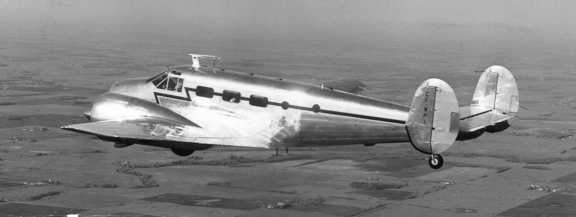
The aircraft was acquired by Orville Rowland of Okotoks who donated CF-MPI to the Nanton Lancaster Society in 1998. As per Mr. Rowland's wishes, the aircraft will continue to carry its RCMP markings but will also serve as an example of a type of aircraft which served with the Royal Canadian Air Force and the Royal Air Force during World War II. Expeditor 'CF-MPI' is currently in an off-site storage location due to lack of space in the museum.
|
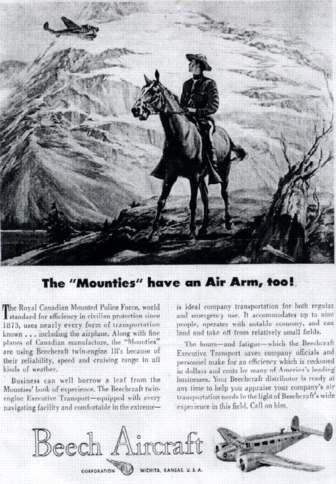 The Exepeditor shown in this advertisement is the museum's CF-MPI. |